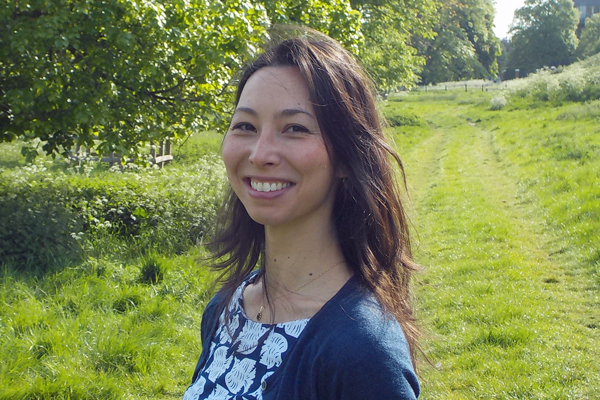
New research published today in the journal Parasitology shows how the prehistoric inhabitants of a settlement in the freshwater marshes of eastern England were infected by intestinal worms caught from foraging for food in the lakes and waterways around their homes.
The Bronze Age settlement at Must Farm, located near what is now the fenland city of Peterborough, consisted of wooden houses built on stilts above the water. Wooden causeways connected islands in the marsh, and dugout canoes were used to travel along water channels.
The village burnt down in a catastrophic fire around 3,000 years ago, with artefacts from the houses preserved in mud below the waterline, including food, cloth, and jewellery. The site has been called “Britain’s Pompeii”.
Also preserved in the surrounding mud were waterlogged “coprolites” – pieces of human faeces – that have now been collected and analysed by archaeologists at the University of Cambridge. They used microscopy techniques to detect ancient parasite eggs within the faeces and surrounding sediment.
Very little is known about the intestinal diseases of Bronze Age Britain. The one previous study, of a farming village in Somerset, found evidence of roundworm and whipworm: parasites spread through contamination of food by human faeces.
The ancient excrement of the Anglian marshes tells a different story. “We have found the earliest evidence for fish tapeworm, Echinostoma worm, and giant kidney worm in Britain,” said study lead author Dr Piers Mitchell of Cambridge’s Department of Archaeology.
“These parasites are spread by eating raw aquatic animals such as fish, amphibians and molluscs. Living over slow-moving water may have protected the inhabitants from some parasites, but put them at risk of others if they ate fish or frogs.”
Disposal of human and animal waste into the water around the settlement likely prevented direct faecal pollution of the fenlanders’ food, and so prevented infection from roundworm – the eggs of which have been found at Bronze Age sites across Europe.
However, water in the fens would have been quite stagnant, due in part to thick reed beds, leaving waste accumulating in the surrounding channels. Researchers say this likely provided fertile ground for other parasites to infect local wildlife, which – if eaten raw or poorly cooked – then spread to village residents.
“The dumping of excrement into the freshwater channel in which the settlement was built, and consumption of aquatic organisms from the surrounding area, created an ideal nexus for infection with various species of intestinal parasite,” said study first author Marissa Ledger, also from Cambridge’s Department of Archaeology.
Fish tapeworms can reach 10m in length, and live coiled up in the intestines. Heavy infection can lead to anaemia. Giant kidney worms can reach up to a metre in length. They gradually destroy the organ as they become larger, leading to kidney failure. Echinostoma worms are much smaller, up to 1cm in length. Heavy infection can lead to inflammation of the intestinal lining.
“As writing was only introduced to Britain centuries later with the Romans, these people were unable to record what happened to them during their lives. This research enables us for the first time to clearly understand the infectious diseases experienced by prehistoric people living in the Fens,” said Ledger.
The Cambridge team worked with colleagues at the University of Bristol’s Organic Chemistry Unit to determine whether coprolites excavated from around the houses were human or animal. While some were human, others were from dogs.
“Both humans and dogs were infected by similar parasitic worms, which suggests the humans were sharing their food or leftovers with their dogs,” said Ledger.
Other parasites that infect animals were also found at the site, including pig whipworm and Capillaria worm. It is thought that they originated from the butchery and consumption of the intestines of farmed or hunted animals, but probably did not cause humans any harm.
The researchers compared their latest data with previous studies on ancient parasites from both the Bronze Age and Neolithic. Must Farm tallies with the trend of fewer parasite species found at Bronze Age compared with Neolithic sites.
“Our study fits with the broader pattern of a shrinking of the parasite ecosystem through time,” said Mitchell. “Changes in diet, sanitation and human-animal relationships over millennia have affected rates of parasitic infection.” Although he points out that infections from the fish tapeworm found at Must Farm have seen a recent resurgence due to the popularity of sushi, smoked salmon and ceviche.
“We now need to study other sites in prehistoric Britain where people lived different lifestyles, to help us understand how our ancestors’ way of life affected their risk of developing infectious diseases,” added Mitchell.
The Must Farm site is an exceptionally well-preserved settlement dating to 900-800 BC (the Late Bronze Age). The site was first discovered in 1999. The Cambridge Archaeological Unit carried out a major excavation between 2015 and 2016, funded by Historic England and Forterra Building Products Ltd.
‘Coprolites’ from the Must Farm archaeological excavation in East Anglia shows the prehistoric inhabitants were infected by parasitic worms that can be spread by eating raw fish, frogs and shellfish.

The text in this work is licensed under a Creative Commons Attribution 4.0 International License. Images, including our videos, are Copyright ©University of Cambridge and licensors/contributors as identified. All rights reserved. We make our image and video content available in a number of ways – as here, on our main website under its Terms and conditions, and on a range of channels including social media that permit your use and sharing of our content under their respective Terms.













![YOKO ONO LOOKING FOR...CURATOR TALK Yoko Ono performing Cut Piece [1964] at Carnegie Recital Hall, NYC. March 25, 1965. Copyright Minoru Niizuma C Yoko Ono, Credit: Yoko Ono performing Cut Piece [1964] at Carnegie Recital Hall](http://www.cam.ac.uk/sites/www.cam.ac.uk/files/styles/content-580x288/public/news/news/yoko.png?itok=Dv3UlEhl)











 Among this year’s successful awardees is Dr Margherita Turco from Cambridge’s Centre for Trophoblast Research (CTR).
Among this year’s successful awardees is Dr Margherita Turco from Cambridge’s Centre for Trophoblast Research (CTR).
